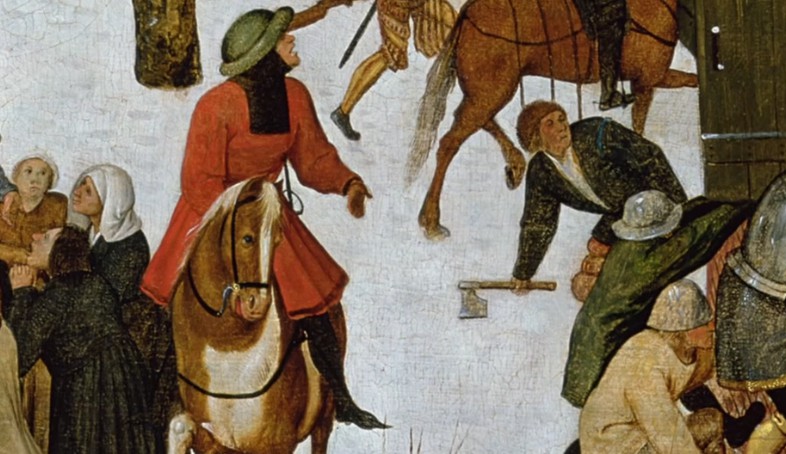But, in Flanders, in the Low Countries,
但在佛蘭德斯 在低地國家
a different artist would crowd his landscapes with people.
另一位藝術家用人物來使風景畫變得豐滿
In 1565, the Flemish master Pieter Bruegel painted a set of landscapes which
在1565年,佛蘭德大師 老彼得.勃魯蓋爾畫了一幅風景畫
reinvented that traditional medieval cycle,
重現了傳統的中世紀時期
the labours of the months.
數月勞作的勞工們
These, of course, are on an epic scale.
當然 這是以宏大的規模完成的

But, here, there's not a single feudal lord to be found.
但在這里 沒有一個是封建領主
The man who commissioned them
驅使他們勞作的人
came from bustling, commercial Antwerp,
來自繁華而又商業化的安特衛普
a merchant called Nicolaes Jonghelinck
這位商人叫做尼古拉斯.揚格林克
who wanted them to decorate the grand dining space of his suburban villa.
他想讓他們裝修自己在郊區別墅的豪華餐廳
Perhaps this was Jonghelinck's way
可能這是揚格林克
of identifying with the ordinary folk,
所認為的普通人的生活
because what we have, for the first time,
因為在一開始 我們擁有的就是
is a credible vision of country society,
一幅鄉村社會圖景
real villages with people working and playing together.
真實的鄉村 還有人們在其中一同工作玩耍
Bruegel himself was no brush-wielding yokel.
勃魯蓋爾自己不是一個不會寫字的莊稼漢
He was learned and well-travelled.
他很有學識 游歷四方
He'd taken a trip over the Alps to Italy, sketching as he went.
他曾越過阿爾卑斯去意大利旅行 同時畫草圖
Some of those Alpine peaks appear, incongruously,
有些阿爾卑斯山峰出現在了他所描繪的
alongside depictions of his low-lying, Flemish home.
地勢低洼的佛蘭德斯故鄉旁邊 很不和諧
But that only increases the telescopic sense of deep space
但這也只是為了增加外層空間的景深感
Bruegel gives us, using those tree lines
通過這些林木線和遠方山峰的曲線
and the curve of the peaks to send our vision plunging,
勃魯蓋爾把我們的視覺向下引導
like the flight of that bird,
就向那只鳥的飛行方向一樣
from huge vistas to the smallest detail.
從宏偉的遠景拉到最細節的部分
Along with that optical drama,
除了這種戲劇性的視覺效果外
we get another kind of perspective,
還有另一種視角
a philosophical confrontation
伴隨著我們與大自然本身關系的
with our relationship to nature itself -
一種哲學上的沖突
unsentimental, rugged, which demands a closer look.
無情又曲折 需要細細觀察











